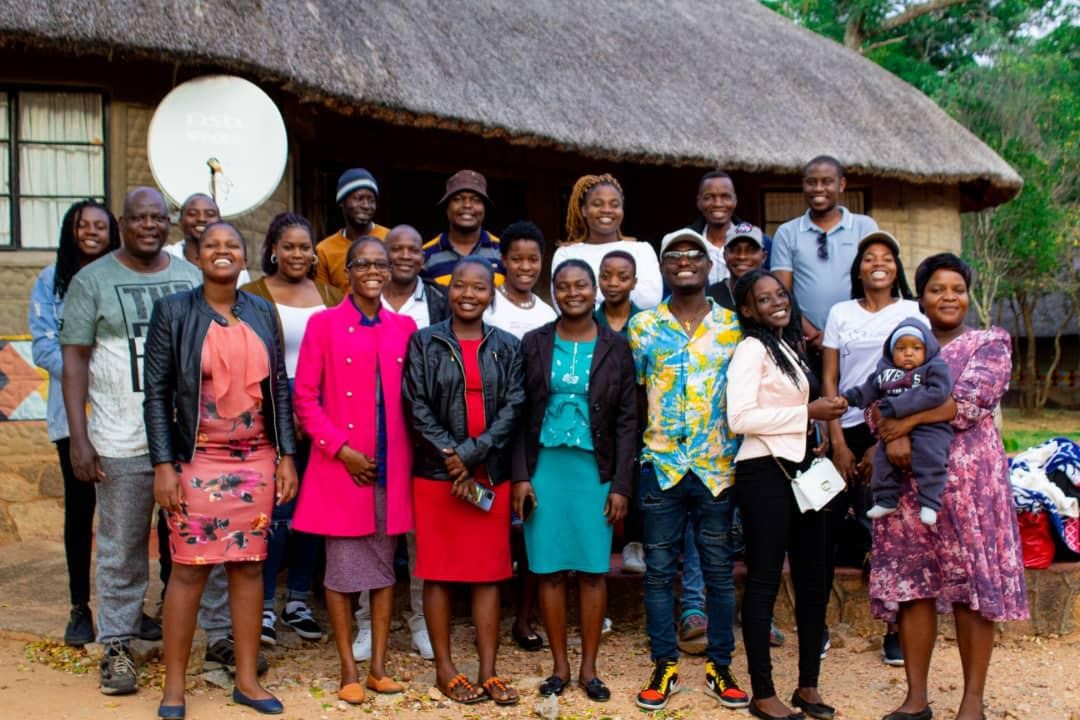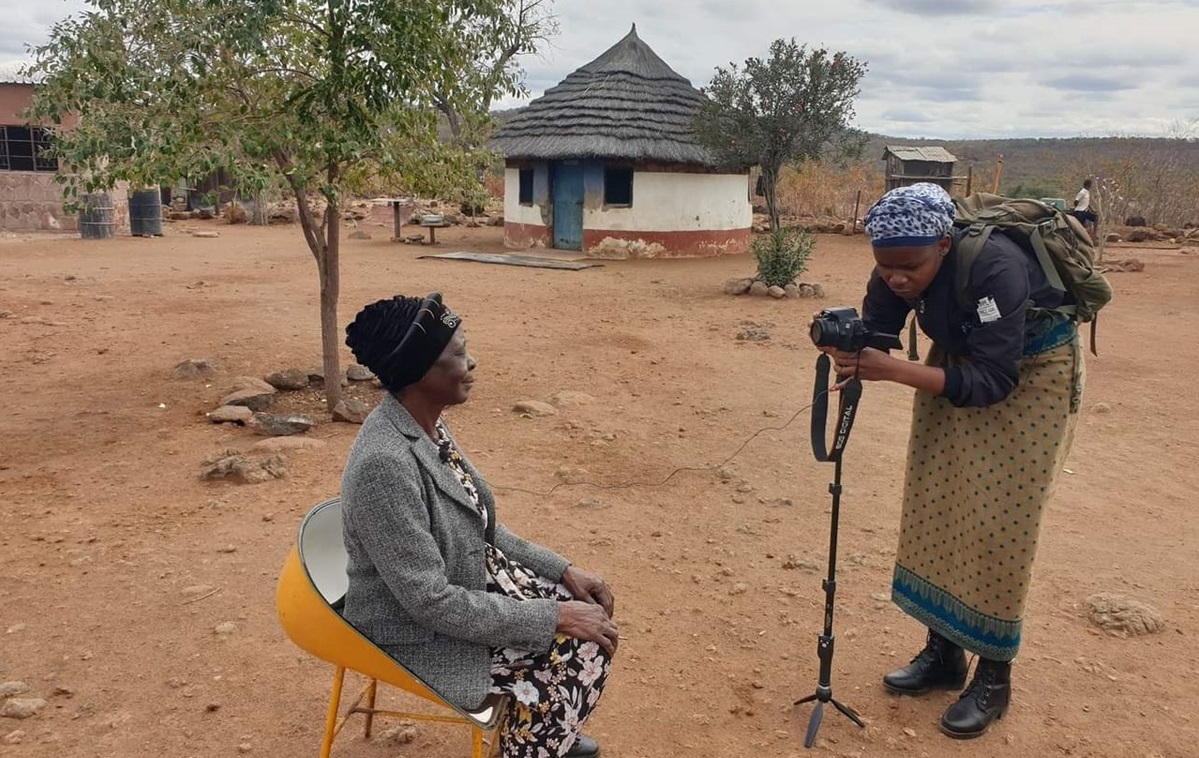Stay up to date with IPI’s work on media innovation and sustainability by subscribing to our newsletter The Outlook. Sign up here.
Zimbabwe’s media is divided along partisan lines, with the largest dailies closely controlled by the government. Disinformation spreads easily in the resulting confusion, and debunking it is particularly challenging in rural areas with few local media and limited internet access.
“Our audiences are the ones who suffer the most,” explains media founder Mary Mundeya. “The media have given priority to political parties, to political leaders, even to advertisers.”
The 2023 elections brought these challenges to the fore, with independent media aiming to support voters to make informed choices amid government crackdowns on the press.
Reaching marginalized audiences in Zimbabwe, including the nine in ten who live in rural areas and the two thirds who do not use the internet, is essential to strengthening civic participation. This engagement must happen before, during and after key moments like elections.
Two young Zimbabwean media outlets have found a way to build ties with these groups that builds trust and identifies overlooked stories, using citizen journalism, and they already have examples of their reporting spurring change.
Mundeya set up She Corresponds in 2023 to provide an independent media free of these allegiances. Instead, she puts ordinary Zimbabweans – particularly women – at the heart of reporting.
“We take the bottom-up approach, we give prominence to audiences, we give prominence to marginalized communities, then we tell their stories,” she says.
Another organization pursuing this goal is Community Podium. Their primary audience is residents of rural areas, though they have also found a significant following among the Zimbabwean diaspora.
Scaling reach through infographics
Ahead of the August election, Community Podium’s service journalism included publishing in local languages (Isindebele, Kalanga, Nambya, Sotho and Tonga) and sharing stories on WhatsApp, a medium more widely used than social media or websites for accessing news in Zimbabwe.
Infographics were another effective method for reaching new readers in rural areas. The goal here, founder Nkosikhona Dibiti explains, was to distill the most essential information to improve audiences’ basic understanding of the democratic process – for example the function of councilors and members of parliament – into an easily digestible format. The infographics didn’t refer to parties, electoral campaigns or promises, and the image files could be shared widely, separately from news articles.
“We make sure that those communities are not starved of information that they need to know about the country,” says Dibiti.
The infographics reached over 50,000 people across multiple platforms, driving growth and engagement for Community Podium, including 30% growth on X (formerly Twitter).
For Mary Mundeya’s team, a TikTok account launched shortly before the election became their fastest growing platform with around 4 million views. The team shared updates from polling stations around the country, snippets of interviews with candidates, as well as videos about other under-reported news topics, such as disputes over nurses’ salaries and child trafficking.
Tip: Be wary of people who tell you to “trust” them. News is fact-based and you should always be able to find the source information. If someone won’t share their sources and asks you to just trust them, then that’s a sign that the story may not be true. #ZimElections2023 pic.twitter.com/TLIwp8DaYC
— Community Podium (@communitypodium) August 17, 2023
Community Podium also informed their audiences about disinformation and shared media literacy tips.
Relationship-building
Both founders are clear that providing fact-based reports and being creative in formats is not sufficient to reach rural Zimbabweans. She Corresponds and Community Podium invest in building relationships with their target audience, to develop long-term, trust-based dialogue.
Mary Mundeya says her team has worked to build links with community-based organizations and NGOs. This relationship allows them to attend local events and meet the community members these groups advocate for. This is how the team has developed story ideas on the experience of Zimbabweans with disabilities, who were disadvantaged by chaotic election procedures.
She Corresponds was able to document other instances of discrimination in the run-up to the election thanks to their community links, for example reporting on transgender and intersex citizens being denied voter registration because their appearance did not correspond with the information on their identity card. Mundeya says both stories were important in holding the electoral commission to account.
Meanwhile, Community Podium shared stories called ‘Community Diaries’ where members of their target audience shared their own motivation for voting in short video clips.

Community Podium contributors and team members. Photo: Courtesy of Community Podium
Citizen journalism
At Community Podium, relationship-building extends to training citizen journalists from demographics rarely represented in Zimbabwean newsrooms.
The editorial team recruits people in rural regions and trains them in skills such as news writing and interviewing. After completing the training, they join virtual newsroom groups, managed mainly via WhatsApp, where they can pitch stories and take part in further training. The citizen journalists introduce the newsroom to issues that are highly relevant to communities, and the stories undergo fact-checking and editing before publication.
Dibiti acknowledges the process is time-consuming, but reflects Community Podium’s mission of repairing trust.
“The whole idea is to say we’re not going to [just] create content about a specific community, we’re going to identify people in that particular community and we’re going to create content together with them,” he says.
The reporting has sparked positive impact. Community Podium has a large following among the Zimbabwean diaspora, and members of this group have mobilized to donate to projects covered by the outlet, including development of community clinics and classrooms.
Community Podium has so far trained over 100 citizen journalists, 15 of whom have gone on to receive official journalist accreditation by the Zimbabwe Media Commission, which Dibiti says is a testament to the success and rigorousness of the programme.
“Voices that have largely been silent are now being heard,” says Dibiti.
Similarly, She Corresponds offers training and peer-to-peer mentorship to its journalists, and encourages them to try out new beats or formats, in contrast to Mundeya’s experience in Zimbabwean newsrooms where women were under-represented and often assigned to “less serious” beats.
The next step: sustainability
She Corresponds currently funds operations by doing multimedia work – photography and videography – for external clients, which Mundeya describes as a “shield” lessening reliance on funding. With the outlet still in its infancy, she hopes that the proof of close audience relationships will help attract donor funding next year in order to continue their work and grow.
It’s a similar story at Community Podium, currently funded by three donors, and supported by pro bono work. Dibiti is working on identifying potential donors and sharing impact stories, with the aim of securing enough funding to cover the day-to-day operational costs.
Both founders hope that funders will identify with their goal to continue to catalyze positive change by passing the mic to the people directly affected by major issues such as climate change, labor rights and governance, but rarely consulted.
IPI’s media innovation and sustainability work is made possible with support from the European Union, Friedrich Naumann Foundation and ERSTE Foundation.



